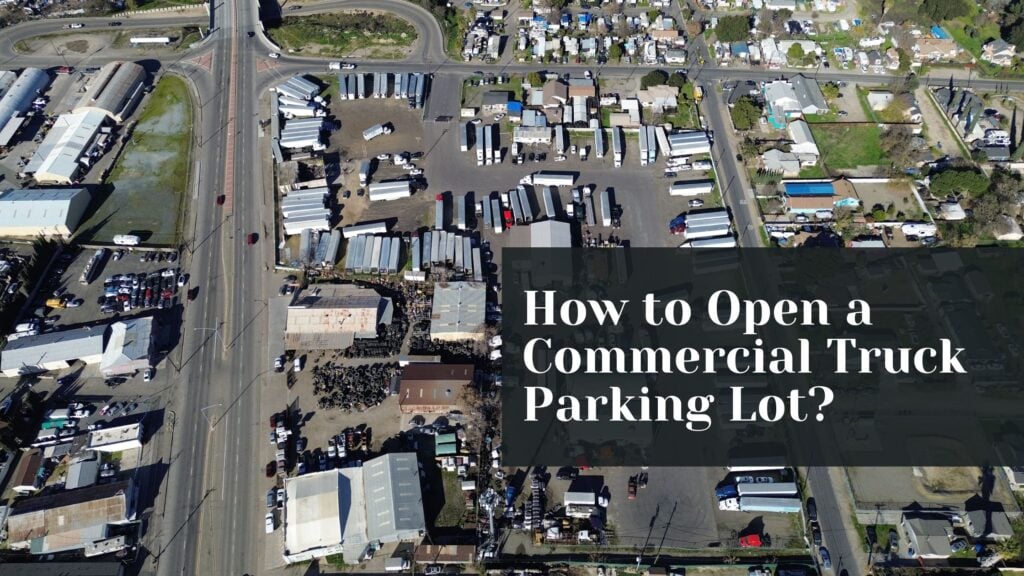
The rising demand for freight transportation across the U.S. has spotlighted a growing need for commercial truck parking. With limited options for truck drivers to safely park their rigs, entrepreneurs are now turning to truck parking as a lucrative real estate opportunity. If you’re wondering how to open a commercial truck parking lot, this guide will walk you through the key steps—from market research to licensing, setup, and promotion.
Step 1: Understand the Market Demand
Before investing in land or infrastructure, research the demand for Semi Truck parking in your target area. Locations near industrial zones, distribution centers, major highways, and logistics hubs typically have high parking needs. Talk to local trucking companies and owner-operators, and analyze online directories where drivers Find Truck Parking.
You can also look at areas with restricted street parking or ordinances limiting overnight truck stays—these are signs of strong unmet demand.
Step 2: Choose the Right Property
Once you’ve identified the right area, search for a parcel of land that meets zoning and accessibility requirements. Your ideal site should have:
- Easy access to major roads or interstates
- Flat, paved or gravel surface
- Zoning approval for commercial vehicle parking
- Room for maneuvering large trucks and trailers
- Utilities if you plan to offer restrooms, lighting, or other amenities
If you already own land and want to List Your Property for parking, make sure it’s compliant with local commercial use regulations and ready for truck access.
Step 3: Get Permits and Comply with Regulations
Each state and municipality has different rules regarding land use, safety, and environmental impact. Common requirements include:
- Land use and zoning permits
- Stormwater runoff and environmental impact assessments
- Fire department clearance for lighting and access roads
- Business licenses or tax registrations
Partner with a zoning consultant or speak directly with your local planning department to avoid costly legal hurdles down the road.
Step 4: Design Your Lot for Truck Access
Commercial trucks require more than just empty space—they need well-planned layouts for smooth entry, exit, and parking. Some key considerations:
- Designate clearly marked truck and trailer parking stalls
- Allow wide turning radii at entrances and aisles
- Include security lighting, fencing, and cameras for peace of mind
- Consider offering basic amenities like trash bins, portable toilets, and vending machines
Depending on your budget, you can also offer electric hookups, overnight restrooms, or even driver lounges to add value and attract repeat users.
Step 5: Set Pricing and Payment Systems
The pricing model depends on your lot’s location, features, and size. Some lots charge by the hour, while others offer daily, weekly, or monthly rates. For example:
- Hourly: $5–$10
- Daily: $15–$30
- Monthly: $150–$400
Integrating a digital payment system or mobile app allows for easier self-service, reduces overhead, and improves customer experience. Many operators are also adopting online booking platforms to streamline reservations.
Step 6: Market Your Truck Parking Lot
Once your lot is up and running, marketing is key to filling your spaces. Here are effective strategies:
- Online listings: Get your site listed on truck parking apps and directories where drivers Find Truck Parking.
- Local outreach: Connect with local freight companies, brokers, and independent truckers.
- Social media: Use platforms like Facebook and LinkedIn to target trucking groups.
- Search engine optimization (SEO): Build a website optimized for keywords like “truck parking near [your city]” and “semi truck parking.”
Using a trusted platform like Semiyard can also help you gain visibility by promoting your lot to truckers searching in real-time.
Step 7: Offer Long-Term Parking Options
Many truckers prefer stability and security—so offering monthly or long-term parking can create steady revenue. Structure your terms to include things like:
- 24/7 access
- Locked gate with security codes
- Designated spots for repeat customers
- Auto-renewing billing or discount plans
This type of offering appeals to independent owner-operators who frequent the same routes and want reliable access.
Final Thoughts
Opening a commercial truck parking lot is more than just offering space—it’s about providing a reliable, secure, and accessible solution for truck drivers on the road. With strategic planning, smart investments, and digital tools, your lot can fill a much-needed gap in today’s trucking infrastructure.
Whether you’re investing from scratch or planning to List Your Property for truck use, now is a great time to get involved in this growing industry.
Would you like this blog uploaded in a certain format (like WordPress, HTML, or Google Doc), or do you need a meta title and description as well?


